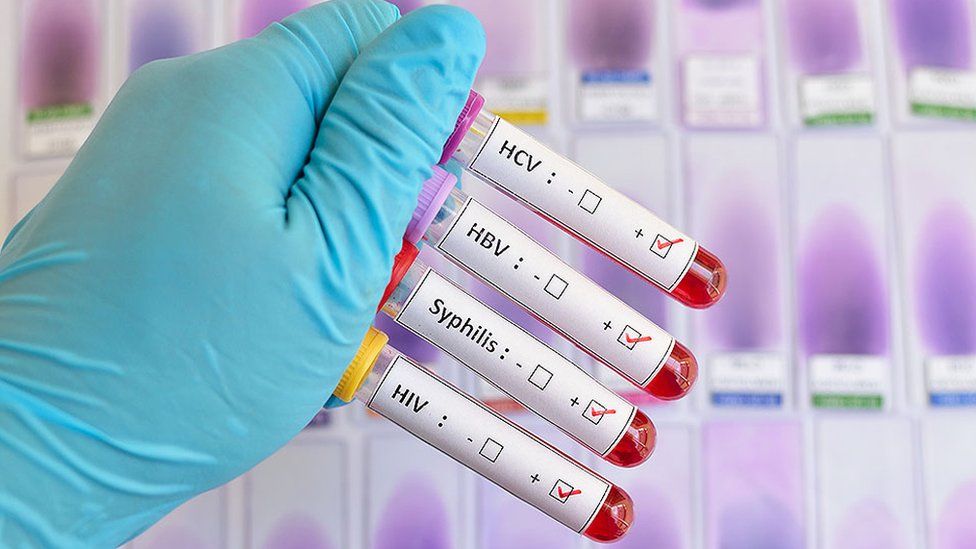 STIs (sexually transmitted infections) are infections that are passed from one person to another during sexual activity. They are a common health issue affecting men and women of all ages and can have serious consequences if left untreated. In this article, we will explore the importance of prevention, testing, and treatment options for STIs in men.
STIs (sexually transmitted infections) are infections that are passed from one person to another during sexual activity. They are a common health issue affecting men and women of all ages and can have serious consequences if left untreated. In this article, we will explore the importance of prevention, testing, and treatment options for STIs in men.
STIs can be caused by bacteria, viruses, or parasites and can be spread through vaginal, anal, or oral sex. The most common STIs in men include chlamydia, gonorrhea, syphilis, herpes, and human papillomavirus (HPV). It is important to note that many STIs do not have symptoms and can go undetected, leading to long-term health problems such as infertility, pelvic inflammatory disease, and even certain types of cancer.
Prevention is key when it comes to STIs. Men can reduce their risk of contracting an STI by using condoms consistently and correctly, limiting the number of sexual partners, and getting vaccinated for HPV. Regular STI testing is also important for early detection and treatment. Testing is recommended for sexually active men under the age of 25 and for men who have multiple sexual partners.
Many STIs have similar symptoms, such as discharge, sores, or rash in the genital area, pain during urination or sex, and fever. However, some STIs, such as HPV, may not cause any symptoms, making regular testing and screening even more important. Risk factors for STI transmission include unprotected sex, multiple sexual partners, and a history of STIs.

Early detection and treatment of STIs are crucial to avoid complications and prevent transmission. Men who suspect they may have an STI should get tested as soon as possible. Testing may involve a physical examination, blood tests, urine samples, or swabs of genital areas. Treatment options for STIs can vary depending on the specific infection and its severity. Antibiotics, antiviral medications, and topical creams may be prescribed by a healthcare provider.
It is important for men to understand that STI prevention is a shared responsibility. Both partners should be involved in preventing the spread of STIs, and communication about safe sex practices and STI testing should be a regular part of sexual relationships. By taking steps to prevent STIs, men can protect their own health as well as the health of their sexual partners.
- Regular STI testing is an important part of maintaining sexual health for men. Testing can help detect STIs early, before complications develop, and can prevent the spread of infection to others. There are a variety of testing options available, including blood tests, urine tests, and swab tests of genital and oral areas.
- Treatment options for STIs vary depending on the type of infection. Antibiotics are commonly used to treat bacterial STIs such as chlamydia, gonorrhea, and syphilis. Antiviral medications can be used to treat viral STIs such as herpes and HIV. It is important to follow the prescribed treatment regimen and to abstain from sexual activity until the infection has cleared.
In some cases, STIs can have long-term or permanent effects on men’s health, including infertility and chronic pain. This makes prevention, testing, and treatment even more important for men’s sexual and reproductive health.
Sexually transmitted infections (STIs) are a common health issue that can affect both men and women. However, men often face unique challenges when it comes to the prevention, testing, and treatment of STIs. A recent article titled “STIs: Prevention, Testing, and Treatment Options for Men” highlights some of the key strategies and options available for men.
One of the primary prevention methods discussed in the article is the use of condoms during sexual activity. Condoms can significantly reduce the risk of contracting STIs, including HIV. Other prevention methods discussed include pre-exposure prophylaxis (PrEP), which involves taking medication to reduce the risk of contracting HIV, and vaccination against HPV, which can help prevent genital warts and certain types of cancer.
When it comes to testing for STIs, men are encouraged to undergo regular screenings, particularly if they engage in high-risk sexual behavior. Testing methods vary depending on the type of infection, but can include blood tests, urine tests, and swabs of the genital area. The article emphasizes the importance of seeking testing and treatment as early as possible, as untreated STIs can lead to serious health complications.
The article also discusses treatment options for men who have contracted an STI. Medications and antibiotics are often prescribed, depending on the type of infection. Alternative and complementary therapies, such as herbal supplements and acupuncture, may also be beneficial in some cases. Additionally, the article emphasizes the importance of partner treatment and follow-up care. It is important for both partners to receive treatment, as well as to undergo follow-up testing to ensure that the infection has been fully cleared.
Overall, the article provides a comprehensive overview of STIs and the options available for men in terms of prevention, testing, and treatment. By taking proactive steps to protect their health, men can reduce their risk of contracting an STI and minimize the potential for long-term health complications.
Living with a sexually transmitted infection (STI) can be challenging, both physically and emotionally. An article titled “STIs: Prevention, Testing, and Treatment Options for Men” addresses some of the issues that men may face when living with an STI, as well as strategies for coping and seeking support.
One of the first challenges men may encounter is dealing with the physical symptoms of an STI. Depending on the type of infection, symptoms can include painful urination, discharge, and genital sores. The article suggests that men practice good self-care, such as getting plenty of rest, staying hydrated, and avoiding alcohol and other substances that can weaken the immune system.
Another important aspect of living with an STI is disclosure and communication with sexual partners. While it can be difficult to have these conversations, it is essential to inform partners of the diagnosis and discuss ways to protect their own health. The article provides tips for how to have these conversations in a respectful and honest way, emphasizing the importance of being clear about the risks and taking responsibility for one’s own health.
Finally, the article highlights the importance of seeking out resources for information and support on STIs. This can include talking to healthcare providers, joining support groups, and accessing online resources. By educating oneself about the infection and connecting with others who have had similar experiences, men can feel more empowered and less isolated in their journey.
In conclusion, living with an STI can be challenging, but there are strategies and resources available to help men cope and thrive. By practicing good self-care, being open and honest with sexual partners, and seeking out information and support, men can take control of their health and minimize the impact of an STI on their lives.


